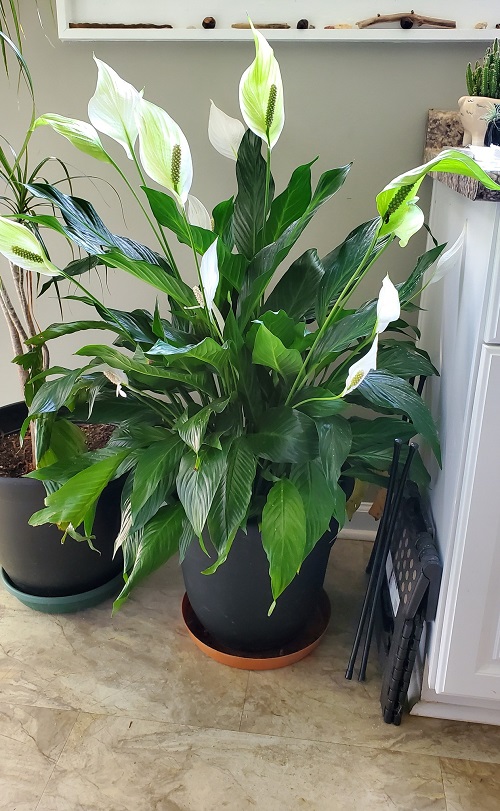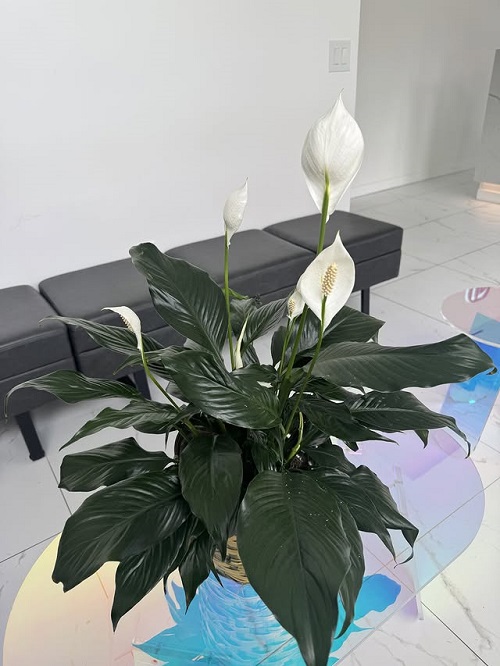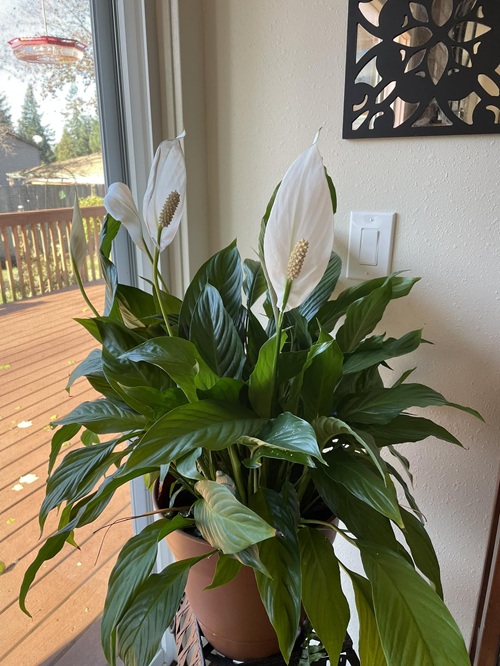Learn How to Grow Peace Lily Indoors for Year Round Blooms and enjoy fresh flowers by giving the plant the right care.
Many plant lovers often wonder how to get a peace lily to bloom again. This popular houseplant can only grow outdoors in USDA zones 10–11, but it does really well indoors, even in low light, which makes it great for homes and offices. Its shiny green leaves look beautiful, but most people love it for its white blooms. The creamy white spathe, which curves around the spadix, adds a striking contrast to the greenery. After the first flowers fade, you might ask if it will bloom again.
Peace Lily Flowering Stages
In commercial nurseries, peace lilies are grown under controlled conditions so they are already blooming when sold. This plant belongs to the Arum family and doesn’t make a true flower—instead, it grows a special leaf called a spathe that looks like one. A blooming peace lily is stunning, but getting it to produce another spathe can be tricky for gardeners. The spathe lasts a long time but eventually fades, turning green and then brown. Like other plants, its cycle goes from budding to blooming, setting seed, and finally wilting.
When Does a Peace Lily Bloom?
Peace lilies sold in stores are usually forced to bloom by professional growers. They use a plant hormone called gibberellic acid, or GA, which helps trigger flowering. GA is a natural substance made from a fungus called Gibberella fujikuroi that grows on rice plants. After the plant is sprayed with GA, it takes about 70 days for a bloom to appear. Most peace lilies flower in mid-spring, around April, and the blooms can last for more than a month.
How Often Does a Peace Lily Bloom?
Peace lilies usually bloom when the growing season starts and sometimes may flower again in early fall. To get two blooms in a year, the plant needs very specific conditions, similar to its natural home in the tropical forests of Colombia and Venezuela. It requires just the right amount of light, temperature, and humidity to produce even a single flower.
Why Is My Peace Lily Not Flowering?
It’s very common for peace lilies not to flower, and many people search online for answers about this problem. After the white spathe fades and is trimmed off, the plant is often kept only for its green leaves and may never bloom again. Indoor conditions at home are usually not ideal for new flowers, but with the right changes in care or by growing it in a controlled environment, the plant can be encouraged to bloom again.
Wrong Time of Year
This response to light, called photoperiodism, is common in many plants. Special sensors in the plant detect light changes, which then trigger hormonal shifts. One group of hormones, called auxins, controls new growth and signals the plant when it’s time to bloom. Peace lilies are short-day plants, which means they start forming buds in cooler seasons and then fully bloom as the days begin to grow longer.
Not Enough Light
Peace lilies (Spathiphyllum) grow naturally under trees where they get filtered light. They can live in low light, but if the light is too dim, they won’t bloom. Usually, they do fine in light as low as 20 foot-candles, but to encourage flowers, they need more light. The plant reacts to the short days and long nights of fall and winter by forming buds. However, most types won’t produce buds during the long days and short nights of spring and summer.
Plant Isn’t Old Enough
A peace lily usually needs to be a few years old before it can bloom. Research shows that younger plants tend to make more flowers, while very old ones may stop blooming altogether. In ideal conditions, a young peace lily can produce its first flower in about 15 months.
How to Make a Peace Lily Bloom
Peace lilies respond not just to light but also to temperature and humidity. To help them bloom, place the plant in a spot with a bit more light. If the plant experiences cooler temperatures around 54°F (12°C) for a few weeks, it will bloom sooner than one kept warm. The best year-round temperature is about 72°F (22°C).
These plants also love high humidity, but homes with central heating are often too dry. You can mist the leaves every day or set the pot on a tray filled with pebbles and water so the moisture slowly evaporates around the plant. Peace lilies don’t need much fertilizer, but giving them a balanced one every 6 to 8 weeks during the growing season can improve their chances of blooming. Cutting off faded flowers will also encourage new ones. Keep the plant away from drafts and let it stay slightly root-bound in its pot. With the right care, it should bloom again.












